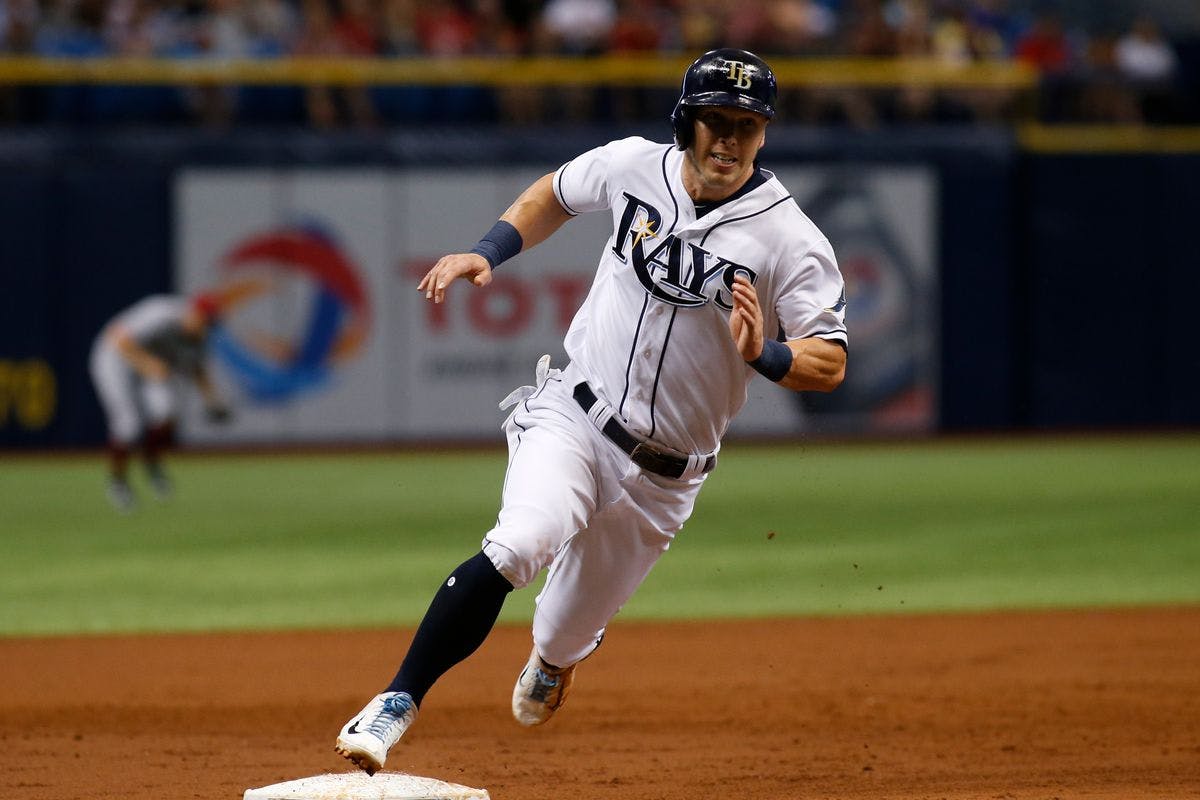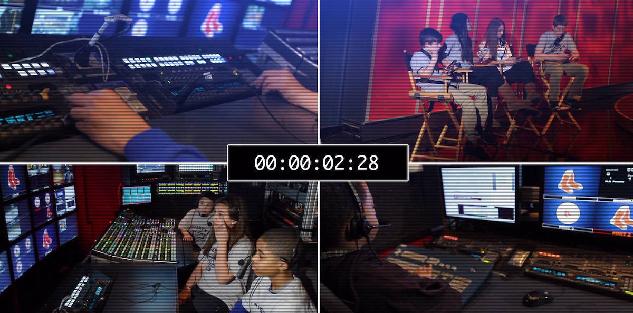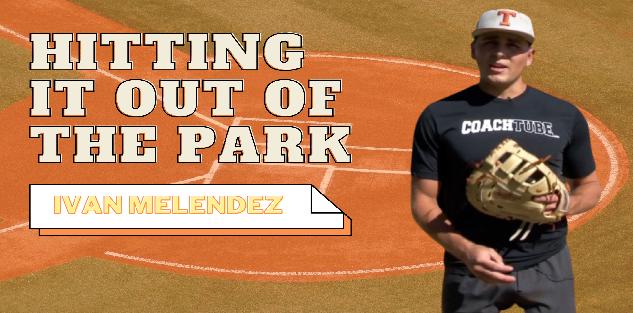Featured courses
- Understanding The Shift by Brandon Ogle
- Two Drills to Improve Outfield Movement and Communication by Grant Young
- The Ultimate Resource For Coaching Youth Baseball by Jackson Chlebowy
- Become a Master at Bunting by Brandon Ogle
- 5 Reasons Why There Is More To Good Base Running Than Just Speed by Brandon Ogle
- Three Injury-Prevention Tips For Your Offseason Pitching Program by Grant Young
- How to Teach Hitting to the Next Generation by Grant Young
- Developing Defensive-Minded Baseball Catchers by Grant Young
- 3 Baserunning Tips to Score More Runs in Baseball by Grant Young
- 5 Outfield Drills to Work on in Season by Alec Burris
- Keys For Scoring More With Runners on First and Third Base by Grant Young
- How to Develop Your Game to Become a Five-Tool Player by Brandon Ogle
- 3 Coaches Share the Keys to Running Baseball Practice the Right Way by Grant Young
- Four Drills to Sharpen a Baseball Hitter’s Vision at the Plate by Grant Young
- Four Quotes to Hit Better With Two-Strikes by Grant Young
- Four of Former MLB Pitcher Juan Nieves’ Movement-Based Pitching Drills by Grant Young
- Two Tips For Developing an Elite Baseball Bullpen by Grant Young
- Overcoming the Four Challenges of Indoor Baseball Practices Because of Weather by Grant Young
- Three Tips to Make Your Baseball Team Mentally Tougher by Grant Young
- Three Priceless Philosophies to Motivate Your Baseball Team by Grant Young
- Three Offseason Baseball Drills to Simulate Competition by Grant Young
- Three Baseball Offseason Strength and Conditioning Essentials by Grant Young
- Important Ways to Improve Your Baseball Team’s Baserunning by Grant Young
- Three Ways to Perfect Hitting Mechanics From an MLB Icon by Grant Young
- Catchers can influence pitchers...for bad or good by Drew Johnson
- Throwing Strikes and Playing Good Defense Equals Wins by Jose Ortiz
- Legendary Indiana Head Baseball Coach Bob Morgan’s Offensive Theory by Grant Young
- Tennessee Head Baseball Coach Tony Vitello on How to Practice Baserunning by Grant Young
- Three Great T-Ball Drills For Youth Baseball Players by Grant Young
- How to Manage a Baseball Pitching Staff by Grant Young
- Three Uncommon Tips to Become a Better Hitter by Grant Young
- How a Baseball Coach Can Develop Strike Throwers by Grant Young
- Drills to Develop Elite Baseball Outfielders by Grant Young
- Baseball Training Exercises to Strengthen Arm and Bat Speed by Grant Young
- How to Use Bunting to Score More Runs by Grant Young
- How To Build An Elite Baseball Infielder by Grant Young
- Three Drills to Improve Your Baseball Team's Infield Play by Grant Young
- Three Keys to Curating a Pitching Staff’s Success by Grant Young
- 3 Techniques to Develop a Baseball Player’s Hitting Approach by Grant Young
- How to Cultivate Confidence Within Your Pitchers by Grant Young
- 5 Every Day Drills To Help You Become A Better Catcher by tyler Linderman
- How to Throw A Curveball by Brandon Ogle
- How to Assemble a Lock-Down Bullpen by Brandon Ogle
- How to Throw a Sinker by Brandon Ogle
- How to be a Smart Baserunner by Brandon Ogle
- Improving a player's slugging average by Phillip Woolgar
- The 8 Fundamentals of Pitching by Drew Johnson
- How to Throw a Deceiving Changeup by Brandon Ogle
- Step Up Your Outfield Defense With These Three Drills by Jose Ortiz
- 8 Baseball Drills Every Player Should Practice by Drew Johnson
- How To Become An Elite Defensive Outfielder by Tyler Linderman
- 5 Tips For Crushing A Curveball by Johnny Grassi
- LEGENDS FOR YOUTH INCLUSION BASEBALL CLINIC by Phil
- Fourteen Ways To Turn A .300 Hitter Into A .210 Hitter by Jay P. Granat, Ph.D.
- How To Become The Ideal Leadoff Man by Brandon Ogle

3 Baserunning Tips to Score More Runs in Baseball
- By Grant Young
A phrase that we’ve all heard hundreds of times by now is that baseball is a game of inches. And while that may be true, there’s also an argument to be made that baseball is a game of 90 feet.
A team’s ability to win the battle on the basepaths — especially as it pertains to baserunning, as well as giving and taking free bases — can often be the difference between winning and losing a close game.ases — can often be the difference between winning and losing a close game.
Not to mention the benefits that applying pressure to an opposing team’s pitcher might provide, in terms of a mis-executed pitch or other costly mistake. Which is why all teams should strive to be lethal on the bases.
And although stealing bases might require fast runners, being a good baserunning team does not. A combination of solid coaching and disciplined players can turn a team into a threatening force that wins by makes the most out of all 90 feet.
Below are three tips by three proven baserunning coaches that will allow your team to scamper to success.
1. Tony Vitello - ‘Incorporating Base Running into Practice’son/incorporating-base-running-into-practice-with-tony-vitello/moving-up-on-balls-in-the-dirt/13712913">Incorporating Base Running into Practice’
Tony Vitello is the head coach at the University of Tennessee. Since taking over at Tennessee in 2017, Vitello has led the Volunteers back to national prominence and has helped establish Tennessee baseball as an SEC and national power, leading the program to four NCAA regionals (2019, 2021, 2022, 2023), three NCAA super regionals (2021, 2022, 2023) and a pair of Men's College World Series appearances (2021 & 2023). Coach Vitello has also won National Coach of the Year awards twice during his time at Tennessee.
In his ‘Incorporating Base Running into Practice’ course, Coach Vitello details a few important aspects to keep in mind when coaching players about taking bases when balls are thrown in the dirt.
“Baserunners should follow the ball out of the hand and be able to see the angle,” Coach Vitello said. “A lot of guys just look at the pitcher release the ball and their eyes move toward home plate.”
This is a small detail that can often spell the difference between moving up to second (or third) base on a ball in the dirt, or remaining stationed. Watching the ball from its entire journey from the pitcher’s hand to the catcher’s mitt (or to the bat) enables the baserunner to make early reads about where the ball might be headed.
Coach Vitello incorporates this into practice by saying that, in intrasquads, if his players are thrown out trying to move up on a passed ball and are thrown out, just have them sent back to whichever base they came from. Making it so there’s no consequence for being over-aggressive on the basepaths allows players to hone their baserunning instincts, which will serve them — and their team — during games.
2. Adam Szabo - ‘Baserunning and Fielding Mechanics’se_lesson/adam-szabo-baserunning-fielding-biomechanics/rounding-bases/11793530">Baserunning and Fielding Mechanics’
Adam Szabo is the Founder and CEO of Excelerate Athletic Development, which partners with and supports teams, organizations, and individuals in reaching their goals through developing athleticism, sport-specific skills, and the ability for athletes to train themselves through a systematic and organized set of programs and workouts.
In his ‘Baserunning and Fielding Mechanics’ course, Coach Szabo discusses the proper technique behind rounding bases.
“If you’re rounding second base, and trying to go to third base, you’re actually going to lean toward third base as you’re rounding,” Coach Szabo said.
Another invaluable tip he offers is that, when rounding a base, baserunners should be driving their right arm across their body, towards the base they’re running to. This will help the baserunner eliminate the bow out that comes from rounding bases, which will save them crucial time when making it to the next base. This little adjustment — which Coach Szabo says to explain as, “take your right arm and push it to your left pec” — could be the difference being safe and out.
Another important tip that Coach Szabo has is to never have a player looking at the ball as they’re rounding third base. There’s a third base coach there for a reason, and it needs to be on that coach to be telling the player (nonverbally) whether they should be heading home or staying at third. The player’s only focus should be following their coaches que, and keeping their momentum geared toward home.
3. Steve Nicollerat - ‘The 10 Base Running Drills Every Coach Needs’l/the-10-base-running-drills-every-coach-needs/1575942">The 10 Base Running Drills Every Coach Needs’

Steve Nicollerat is the Founder of Coach Baseball Right! Which provides baseball organizations dozens of resources available to grow and elevate their current programs and deepen their kids' experiences. In addition, Coach Nicollerat has about 40 years of experience coaching varsity baseball at St. Louis University High School, as well as played collegiate ball at St. Louis University.
In his course, Coach Nicollerat discusses how to steal second base off of left-handed pitchers. The first part of this requires understanding whether the left-handed pitcher can read or not. If the lefty pitcher has proven that they can read effectively, it might be wise to not steal.
But if the lefty isn’t a reader, and instead uses a more deceptive pickoff move to try and negate the run game, Coach Nicollerat explains that one option is to have the baserunner take a big lead, then take off for second base as soon as the pitcher makes their first movement. The idea behind this is that, if the pitcher’s pickoff move is slow, then the baserunner will have enough time to make it to second base if they steal once the pitcher begins their long pickoff move.
Although if you’re also looking to steal against a reading lefty, one way to do so would be to wait until the pitcher enters the apex of their delivery (the top of their leg lift). While this is a risk, the reading pitcher has most likely already made their decision to pitch rather than pick at this point, so the baserunner has a solid chance of stealing the base.
Teaching your players these three coaches’ techniques should have them maximizing opportunities on the basepaths, which will allow your to manufacture more runs and start winning games that you might have otherwise lost.



